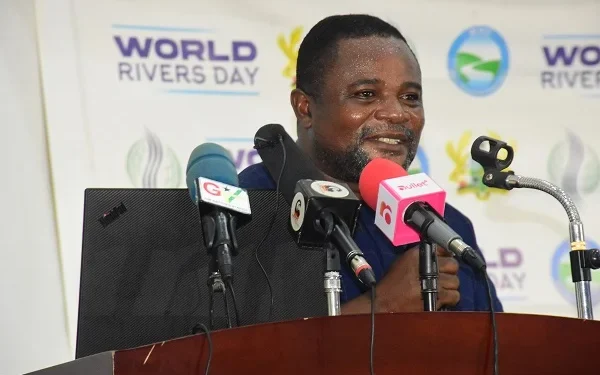Story: News Desk
Ghana’s renewable water supply per person is declining at an alarming rate, and the country could soon face severe water restrictions if urgent action is not taken.
This is the warning from Dr. Mawuli Lumor, Director of Policy, Planning, Research, Monitoring and Evaluation at the Water Resources Commission (WRC).
Speaking with the media, on Wednesday October 1, 2025, he explained how the Commission calculates the country’s water stress levels.
“We compute our report annually — the water stress levels — and basically the computation is quite simple,” he said. “We have what we call the annual renewable water. Ghana is estimated to have around 53 billion cubic meters of renewable water per annum. Then we look at our population.”
According to Dr. Lumor, the formula was straightforward: divide the total renewable water by the population. The problem, however, is that while the water remains constant, the population keeps growing.
“So if you have a constant renewable water supply and your population is growing, the amount that each individual is entitled to is reducing,” he noted.
Dr. Lumor revealed that in 2016, Ghana’s renewable water per person was around 1,900 cubic meters. Today, it has dropped to about 1,500 — a significant decline in less than a decade.
He stressed that this figure included all renewable water, even water that is polluted. This means the actual usable water per person is even lower.
“So by nature, we are already getting less water, and our activities are polluting what we’re already getting. That means we are moving towards dangerous grounds,” he warned.
Dr. Lumor cautioned that if the trend continues, Ghana may have to follow the example of countries like South Africa, where the government was forced to intervene by limiting how much water people could use in certain areas.
“Possibly, as happened in South Africa about two or three years ago, government will have to step in and limit the use of water for particular locations considering the stress levels,” he said.



